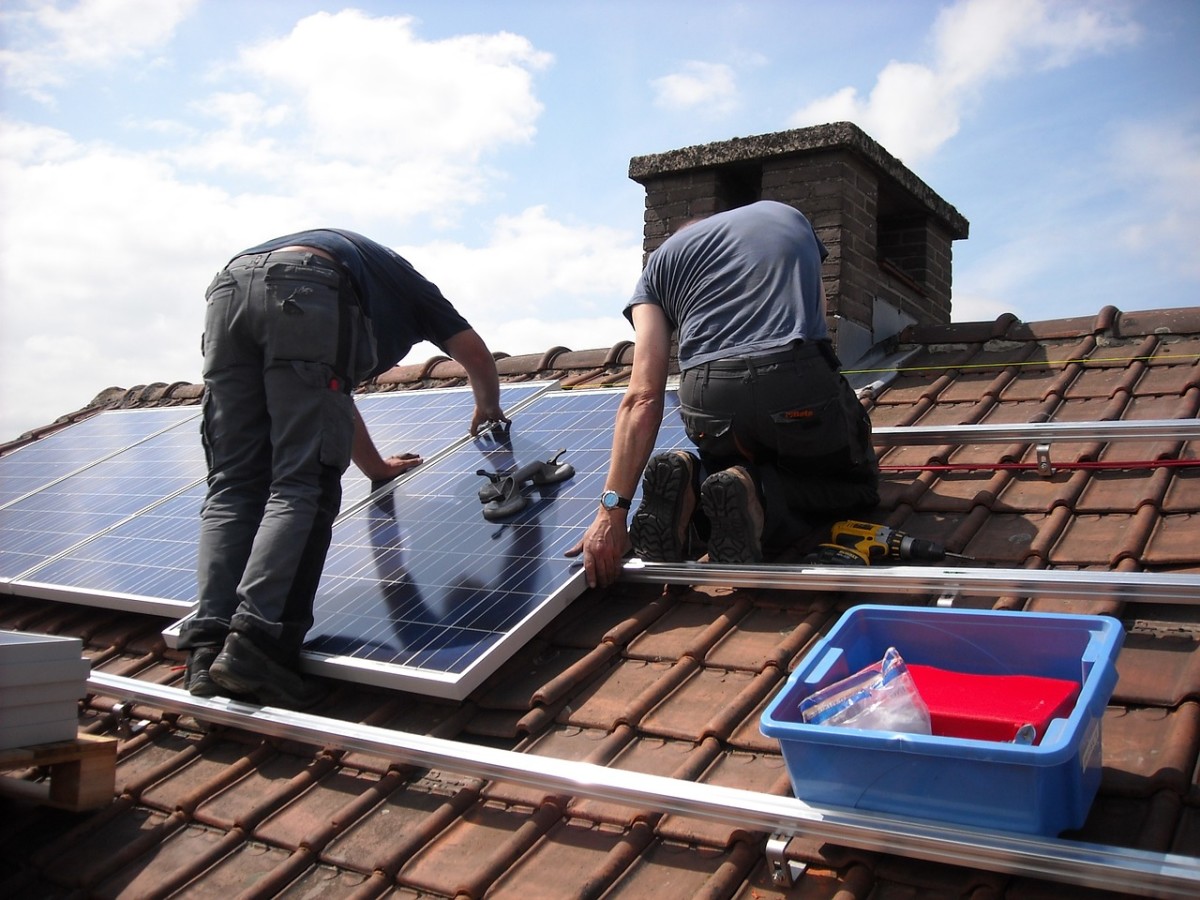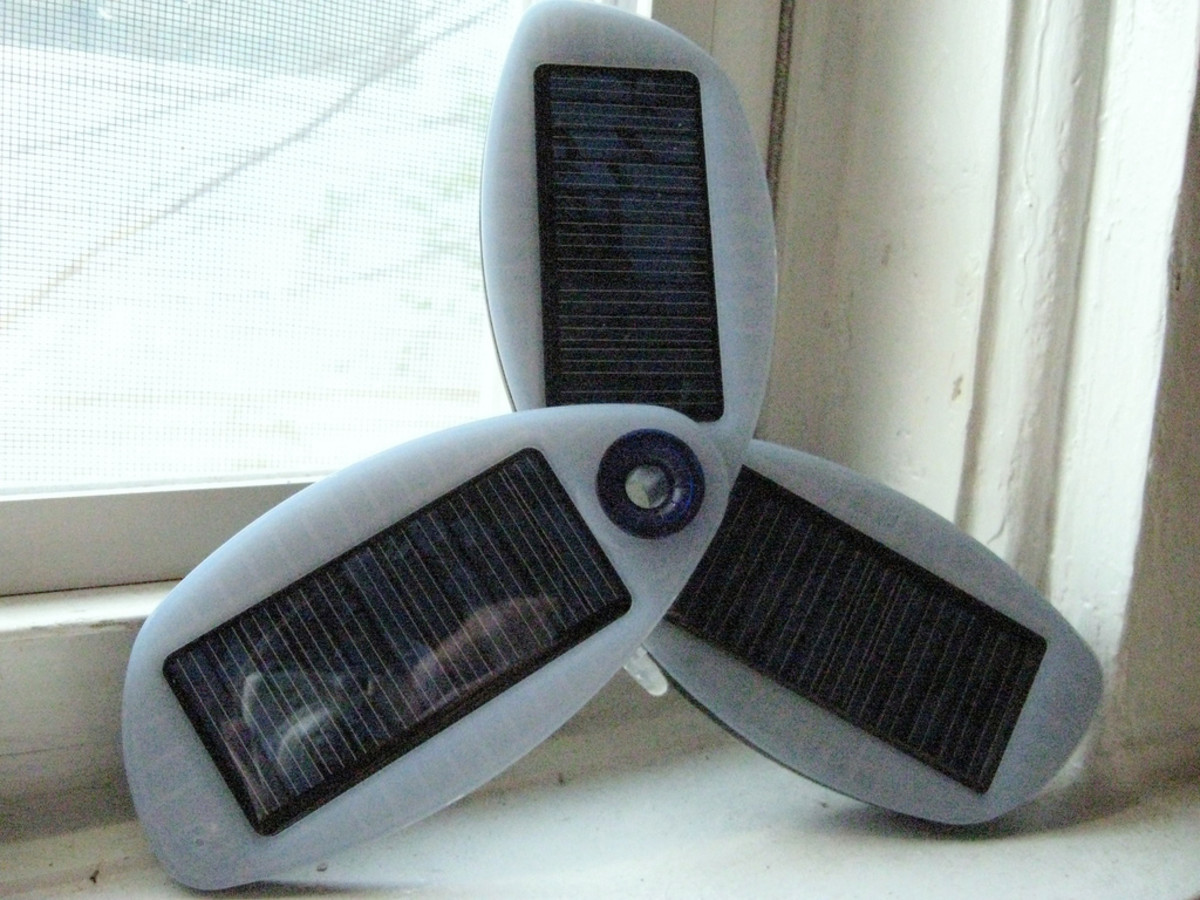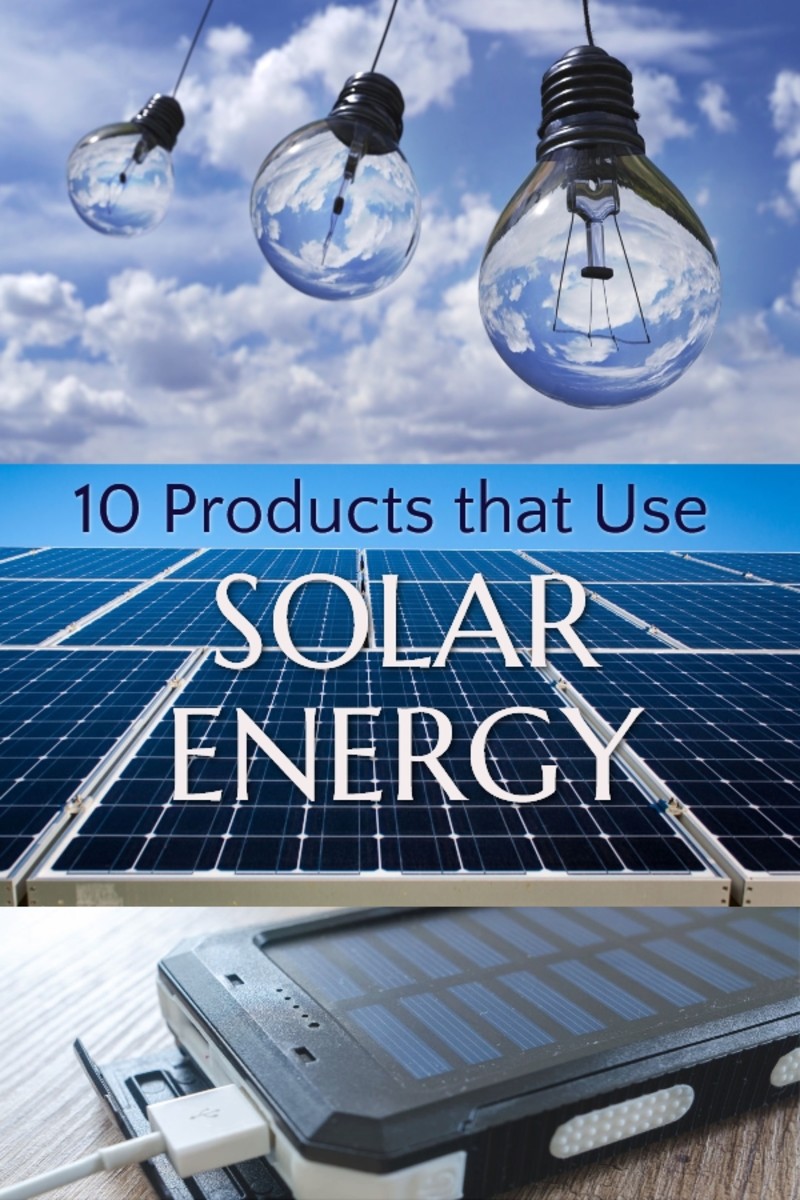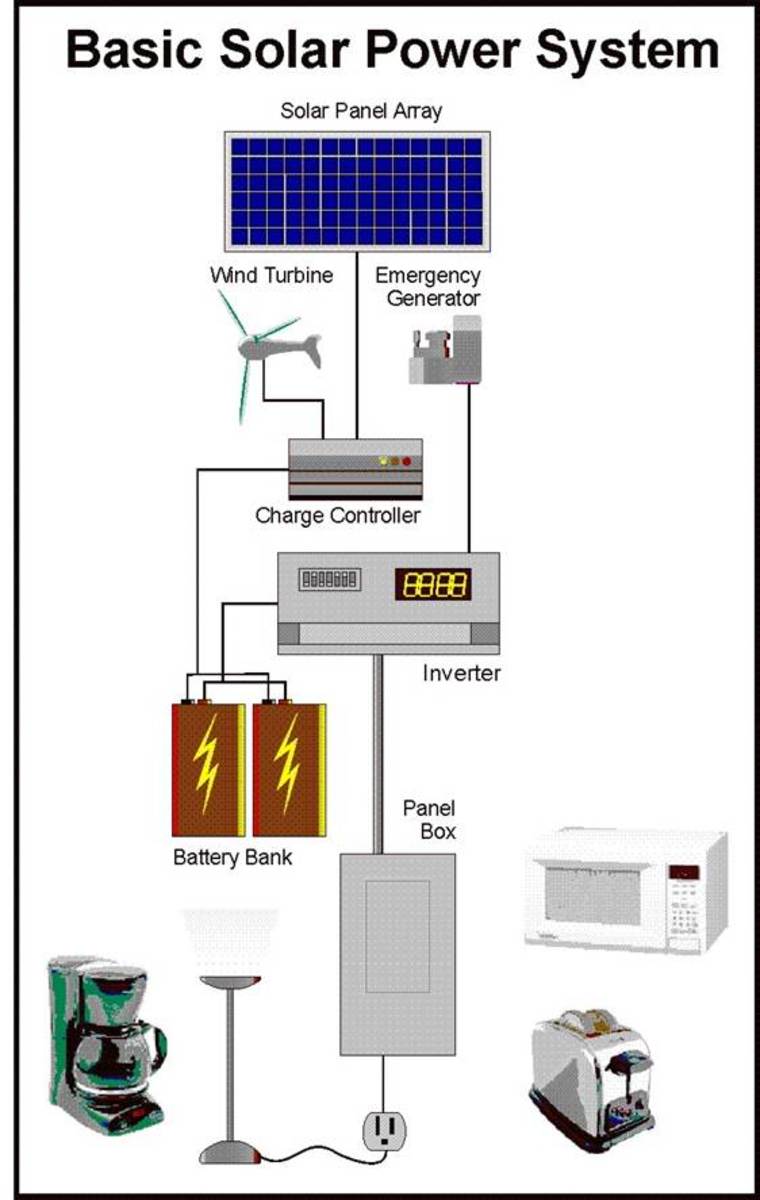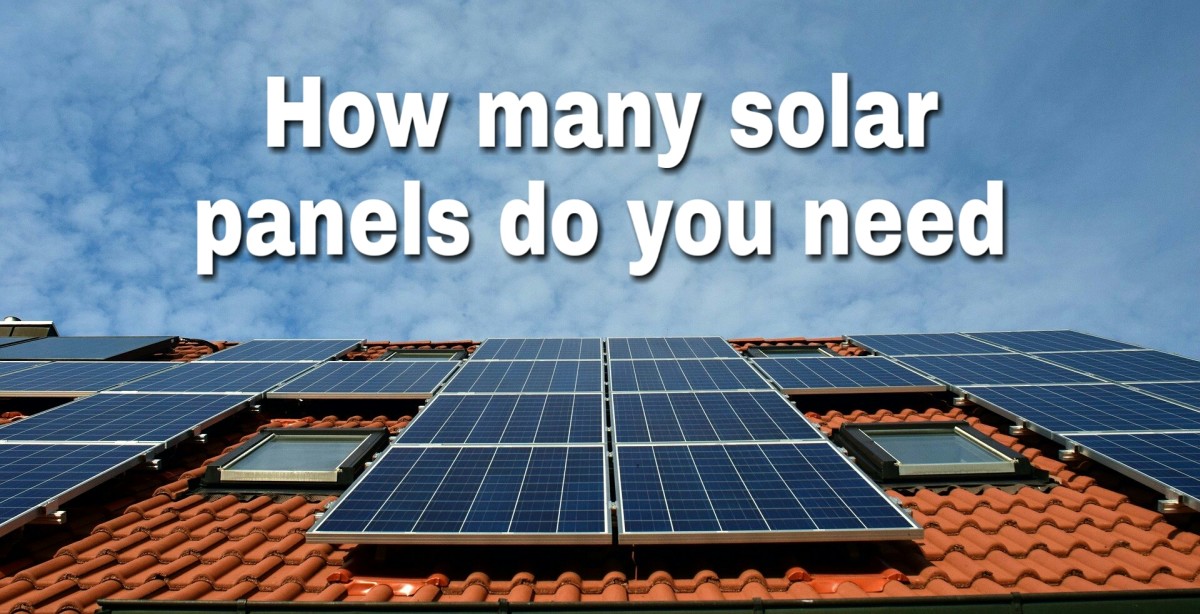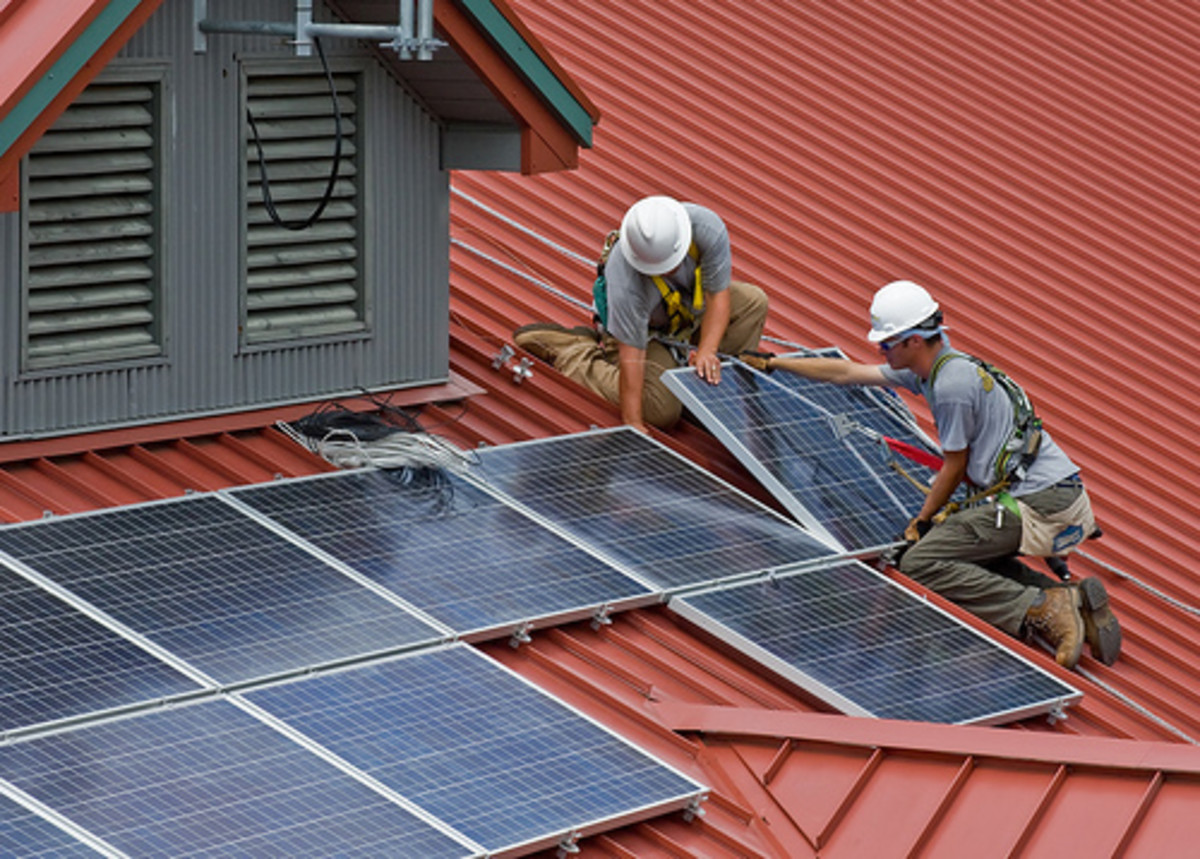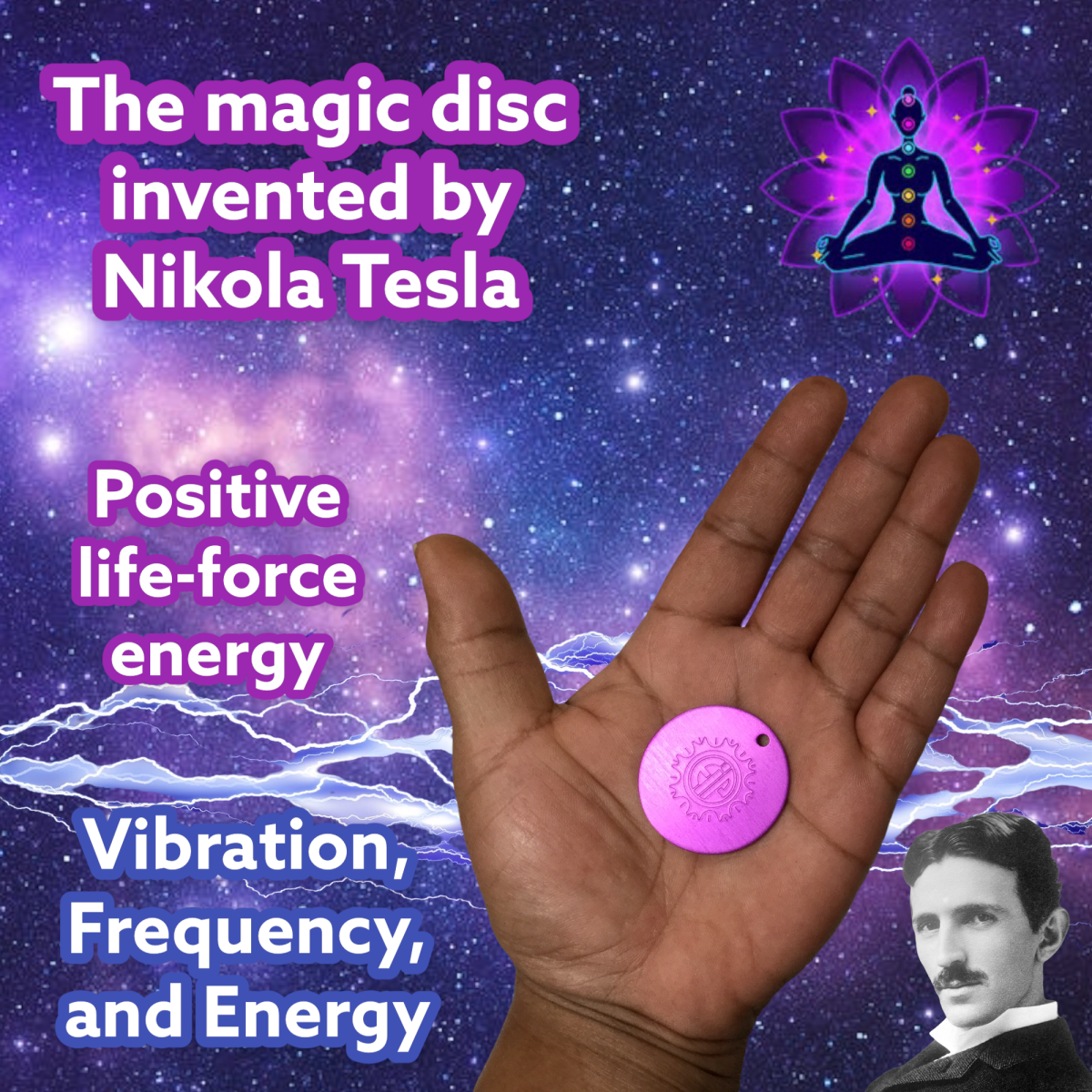Solar Power Options for Residential Homes
If you think solar power can reduce your carbon footprint and lower your energy bills, you're on the right track. Advances in solar technology can help reduce your heating and electricity bills by offsetting 'dirty energy' use with the clean, free energy from the sun.
The sun provides more energy to the surface of the earth in one hour than
all countries generate in one year. This inexhaustible, non-polluting energy
source can be harnessed to provide heat and electricity for household use.
What's most surprising is that it's not as complicated as you may think. Even small changes can make a difference!
Why Choose Solar Power?
Since the beginning of time, the sun's heat has been used to warm
buildings. Homes were positioned to face the sun and to let the maximum amount
of daylight indoors. Modern designs apply the same concept but, with improved
materials, homes can make better use of the free radiant energy. By using less
furnace fuel, less carbon dioxide (CO2) will be released into the atmosphere.
The simplest way to add free heat to a room is by opening the curtains on a south-facing window. The streaming sunlight heats objects in the room which in turn warms the surrounding air. By adding a ceiling fan to circulate the air, a larger indoor space can be heated just by using the sun's energy.
Solar panels can help you reduce your electricity bills. Solar cells convert sunlight directly into electricity, into a form that can be used by your appliances and fixtures. For better performance, a battery backup system can be installed to store any excess energy. When the solar panels aren't producing electricity (for example, after sunset or when the skies are overcast), the batteries can supply electricity to the house.The Benefits of Solar Power
Homeowners sometimes choose to supplement their power needs with a solar powered system. Solar power can help decrease the amount of electricity you need from the local electric company. If you have a large, open yard that has clear access to the afternoon and evening sun, such as a south or west-facing roof, then an inexpensive solar power system can be integrated into your household electrical supply. If you only install a few solar panels, it probably won't be enough to supply power to your appliances but it can help offset the 'dirty' power from the electric company. Over time, you will reduce pollution and save money by using clean, free energy.
People who are interested in generating their own power often also become more energy-conscious. It becomes a habit to turn off lights, TVs and
computers when not in use. Decreasing the amount of energy you need means that a smaller solar
power system may be able to provide your daily energy needs.
The Disadvantages of Solar Power
The biggest and most obvious disadvantage of solar power is that it only
produces heat and electricity when the sun is shining. After the sun sets, no more solar power is produced. And when the sky is overcast, less energy is available for
use. Since most people have become accustomed to having energy readily available
at the flick of a switch, most people will be comfortable to continue to have access to the grid as a
reliable backup. Of course, when available, the sun's energy can be harnessed as much as
possible to reduce pollution.
The more power you require, the more equipment you'll need to install. Solar panels are affordable but could cost between a few hundred dollars to a few thousand dollars depending on how many panels you need. The more power you need, the higher the purchase and installation cost of the panels.
Types of Solar Power Systems
Solar Heaters
A window is a simple example of a solar heater. The sun's energy streams through the glass and the heat energy is collected within a room. More efficient external units can be constructed using a black enclosure and a fan. It needs to be facing south or west to get full exposure of the afternoon sun when the rays are the strongest. Cool air is drawn into the bottom of the unit, heated by the sun and naturally rises as its temperature increases. The warmed air is then circulated into the room by the fan to provide a comfortable indoor air-temperature.
Solar Power Yard Ornaments
A solar power garden ornament, such as a garden or patio light, is the easiest way to get introduced to solar power. Many outdoor products contain a solar cell with a rechargeable battery, in an attractive ornament that can provide lighting at night or operate a water pump for a fountain. These produce very low amounts of power and are mainly for decoration. However, the principle is the same for powering a house but applied on a much larger scale.
Solar Power (without battery backup)
Solar cells are made of semiconductor material that directly converts sunlight into electricity. The electrical energy from solar panels is DC and must be first converted to AC by using an inverter. The solar panel array will be made up of a number of solar panels linked together to provide enough power for your needs. The inverter will be sized appropriately to handle the maximum amount of current that will be generated on a bright, sunny day.
Solar Power (with battery backup)
Adding batteries to your solar power system will allow excess power to be stored for later use. During the night or when clouds obscure the sun, battery backup power can provide power to the rest of the home. The panels should be sized appropriately to ensure that enough power is generated for the home and to charge the batteries at the same time.
Solar Power Shingles
Since the roof of a house receives the most sunlight, it makes sense to combine solar cells with shingles. This solar roofing material provides weather protection and generates clean electricity. Electrical wires are hidden in the attic and travel to the basement where the remaining power equipment is housed.
Before Going Solar
To avoid installation problems and added costs, some preparation needs to
be done first.
Space
Look around your home and yard to determine if you have open area that gets lots of afternoon and evening sunlight. Morning sun is good but the sun's rays are most intense during the afternoon when the sun is high in the sky. Your solar panels should be positioned to take full advantage of these direct rays. The area should also be large enough to accommodate all of your solar panels. The more power you need, the more solar panels you'll need.
Access
The panels should be installed in a location that has easy access for
cleaning and inspection. Debris and dust build up on the panels can severely decrease energy production. Plan for safe access before installation
begins.
Wiring
Electrical wires need to carry the electricity from the panels to the
inverter and then to the household electrical distribution box. The connections
should be kept as short as possible to reduce electrical losses in the copper
wire. If battery backup is added, place them as close as possible to
the distribution box.
Costs
Individual solar panels can cost a few hundred dollars. If a small system
will meet your needs, determine how long it will take for it to pay for itself
in energy savings. Usually this will take a few years but you'll have the peace
of mind that you're reducing pollution and carbon dioxide emission during this
time and beyond.
Why Build Your Own System?
Many local utilities have alternate energy projects and provide a way for homeowners to participate. You can subscribe to solar or wind power generation
stations that are larger and more efficient than small household systems. They
are capable of providing energy for hundreds or thousands of homes instead of
just one home.
The actual electrons coming from your electrical sockets may not originate from these alternate energy plants but your fees help offset the increase development and operational costs of these sites. Instead of installing your own private system, participating in a larger project may be a good option for reducing emissions.
Additional Solar Power Resources
- A Solar Grand Plan | Scientific American
- Solar Thermal | Natural Resources Canada's CanmetENERGY | Leadership in ecoInnovation
Natural Resources Canada's CanmetENERGY | Leadership in ecoInnovation - EERE: Solar Energy Technologies Program
- Solar Photovoltaic Systems | Natural Resources Canada
- The latest news on government and industry solar initiatives.
- Solar Power - A Clean, Renewable Source of Energy for the Home
How 'going green' with solar power can save money and the environment.

